Chopta Tungnath Trek & Chandrashila Trek – Complete Guide
Published on June 23, 2025
Chopta Tungnath Trek is one of those rare journeys that blend nature, spirituality, and simplicity in the most effortless way. The trail begins from the peaceful meadows of Chopta, winding through oak and rhododendron forests, and leads you to Tungnath—the highest Shiva temple in the world. What makes it even more special is that this trek isn’t just about reaching a destination; it’s about feeling every step, every breeze, and every mountain shadow around you.
As you walk along the stone-laid paths, the landscape changes gently—first green and misty, later sharp and open with views of towering Himalayan peaks. Add to that the cultural weight of Tungnath temple and the panoramic reward of Chandrashila summit, and you’ve got a trek that touches both heart and soul. It’s not about adventure alone; it’s about silence, stories, and skies that stretch wider than your thoughts.
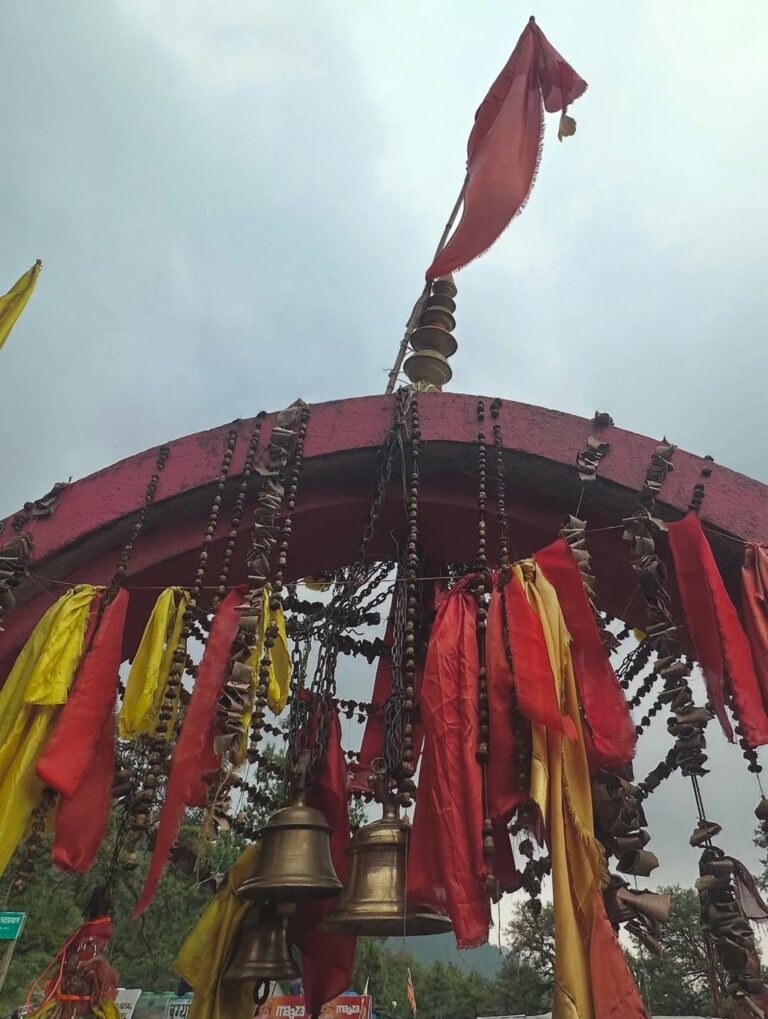
Where is Tungnath Temple? Location Guide for First-Time Trekkers
Tungnath temple trek takes you to one of the most peaceful and sacred places in the Himalayas. Tungnath is located in Uttarakhand’s Rudraprayag district and is part of the famous Panch Kedar temples dedicated to Lord Shiva. What makes it truly unique is that it stands as the highest Shiva temple in the world, sitting quietly at an altitude of around 3,680 meters. The temple is surrounded by tall mountains, clear skies, and forests that feel untouched by time.
To reach Tungnath, you first arrive at Chopta, a small hill station often called the “Mini Switzerland of India.” From Chopta, the walk to the temple is about 3.5 kilometers on a well-laid stone path. The trail is not too steep, making it perfect for first-time trekkers who want a blend of nature, faith, and gentle adventure.
Quick Details for First-Time Trekkers:
-
Base Point: Chopta village in Uttarakhand
-
Trek Distance: 3.5 km from Chopta to Tungnath
-
Trek Time: Around 1.5 to 2.5 hours
-
Altitude: 3,680 meters above sea level
-
Trail Type: Stone-paved walking path
-
Difficulty: Easy to moderate
-
Closest Towns: Ukhimath and Rudraprayag
Why First-Time Trekkers Choose the Tungnath Temple Trek:
-
No need for technical gear or prior trekking experience
-
The path is short, scenic, and peaceful
-
Views of snow-covered Himalayan peaks from the trail
-
Forests of pine and rhododendron along the route
-
Spiritual energy and silence that’s hard to put into words
If you’ve never done a Himalayan trek before, the Tungnath temple trek is the kind of experience that gently introduces you to mountain travel. It’s short, soulful, and stays with you long after the journey ends.

Tungnath Temple Trek – Trail Details, Altitude & Importance
Tungnath temple trek stands out not just for its scenic charm but for the powerful silence that surrounds it. As you walk the mountain trail, the world seems to fade behind you. The temple is not just a stop—it's a destination of calm, history, and elevation. Situated at an altitude of 3,680 meters, it doesn’t feel intimidating, but it commands respect from every step you take toward it.
What makes this part of the Chopta Tungnath trek truly different is how naturally it blends raw nature with deep-rooted devotion. You won’t find commercial rush or chaos. The path winds through open hills and leads you steadily upward, revealing distant peaks, low clouds, and vast meadows.
Trail Experience – What to Expect:
-
You start walking on a clear route that gradually gains height without sharp inclines.
-
The higher you go, the wind feels cleaner, and the trail feels quieter.
-
By the last 15 minutes of the climb, the surroundings open wide and the temple slowly comes into view.
-
Unlike crowded hill stations, the trail is peaceful—often with the sound of bells from mules or chants from pilgrims.
Why Tungnath Matters:
-
It's believed this is where the arms of Lord Shiva appeared after he vanished into the earth.
-
Pilgrims come here not just for darshan, but to feel closer to something deeper.
-
Locals say prayers here feel lighter—as if the mountains themselves carry your voice.
-
It's also said that the temple remains standing through the harshest winters, completely buried in snow, untouched.
For those booking a Chopta Tungnath trek package, this part of the journey offers something that goes beyond photos and checklists. Whether you're a solo traveler looking for peace, or someone chasing the Himalayas for the first time, this short trek brings more than just altitude—it brings meaning.
The temple doesn’t demand much. No tough climbs. No rushed rituals. Just time, intention, and a quiet mind. And in return, it gives you a memory that stays long after you’ve left the trail behind.

Chandrashila Trek – Why the Sunrise View Is Worth the Effort
Chandrashila trek is not just a hike—it’s a moment that lives with you long after your boots leave the trail. The name Chandrashila means “Moon Rock,” and the summit truly feels like standing on a ledge between earth and sky. At an altitude of nearly 4,000 meters, it's the final reward of the Chopta Chandrashila trek, and it's that one place where silence, wind, and wide-open views meet in harmony.
Trekkers often begin early in the dark, with headlamps and quiet steps, just to catch the sunrise from the Chandrashila summit. The first golden light touches the snow peaks one by one—Nanda Devi, Trishul, Kedarnath, and Chaukhamba—and the moment feels almost unreal. You don’t need to be religious or even a seasoned trekker to feel the magic. Just standing there, above the clouds, reminds you how small and lucky you are to witness it.
Why the Chandrashila Summit Trek is Worth Every Step:
-
The view spans over 40 Himalayan peaks, a sight very few short treks in India offer.
-
The trail is short but challenging enough to feel earned—especially with the final steep push to the summit.
-
If you’re coming for the Chopta Chandrashila trek from Delhi, this sunrise makes the overnight travel completely worthwhile.
-
The trek ends with a memory that no photo can fully capture—only your eyes can.
-
Unlike crowded viewpoints elsewhere, Chandrashila feels personal, like the mountain waited just for you.
For First-Time Trekkers from Delhi:
-
The Chandrashila trek from Delhi is a favorite weekend escape.
-
With proper planning or a Chopta Chandrashila trek package, it's easily doable in 3 days.
-
The trek offers a great balance of beauty, effort, and reward without requiring weeks of preparation.
The climb to the Chandrashila summit trek is short, but the feeling it leaves behind is lasting. It's not just about getting to the top—it's about everything you feel when you're up there. And that sunrise? It’s worth every breath, every ache, and every step.
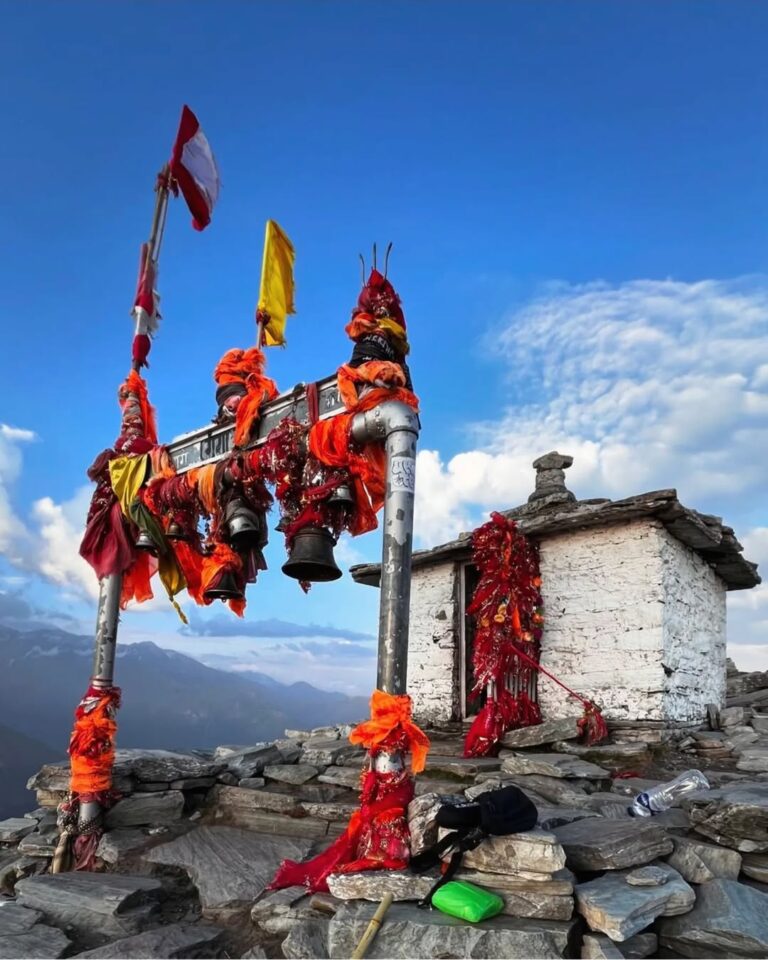
Best Time for the Chopta Tungnath & Chandrashila Trek
Planning the Chopta Tungnath trek or the Chandrashila trek becomes a lot more rewarding when you choose the right season. While the trail is accessible for most of the year, your experience can change completely depending on when you visit—whether you're chasing snowfall, blooming forests, or clear Himalayan skies.
March to June – Spring & Early Summer (Best for Beginners)
This is the most popular season for the Chopta Tungnath trek and Chandrashila trek. The trail is lined with blooming rhododendrons, the weather is pleasant, and visibility is excellent. Ideal for first-time trekkers and photographers.
-
Temperature: 10°C to 25°C
-
Trail Condition: Dry, clear, safe for walking
-
Highlights: Fresh greenery, open skies, moderate crowds
-
Perfect for: Family treks, solo hikers, beginners
July to September – Monsoon (Avoid This Season)
Though Chopta looks lush and alive during the rains, landslides and slippery trails make this the least recommended time for trekking. Visibility is also poor due to fog and clouds.
-
Temperature: 12°C to 18°C
-
Trail Condition: Wet, muddy, risky
-
Highlights: Waterfalls and greenery (if you're already in the region)
-
Perfect for: Offbeat travelers (with caution)
October to November – Post-Monsoon & Autumn (Best Views)
This is one of the best times to attempt the Chopta Tungnath trek or the Chandrashila summit trek. The skies are crystal clear, and the mountains appear unbelievably close.
-
Temperature: 5°C to 15°C
-
Trail Condition: Dry, stable, less crowded
-
Highlights: Stunning sunrise at Chandrashila, golden meadows
-
Perfect for: Trekkers seeking views, weekend escapes
December to February – Winter (Snow Trek Season)
This is a magical time for a Chopta Chandrashila trek in snow. The entire route turns white, and Tungnath temple may be buried in snow, but still accessible. You’ll need proper gear, but the snowy views are breathtaking.
-
Temperature: -5°C to 10°C
-
Trail Condition: Snow-covered, icy, moderate to tough
-
Highlights: Frozen landscapes, adventure feel
-
Perfect for: Experienced trekkers, snow lovers
Choosing the right time based on weather helps you enjoy the Chopta Tungnath & Chandrashila trek to the fullest—whether you want peaceful greenery, golden sunsets, or a snowy white world.
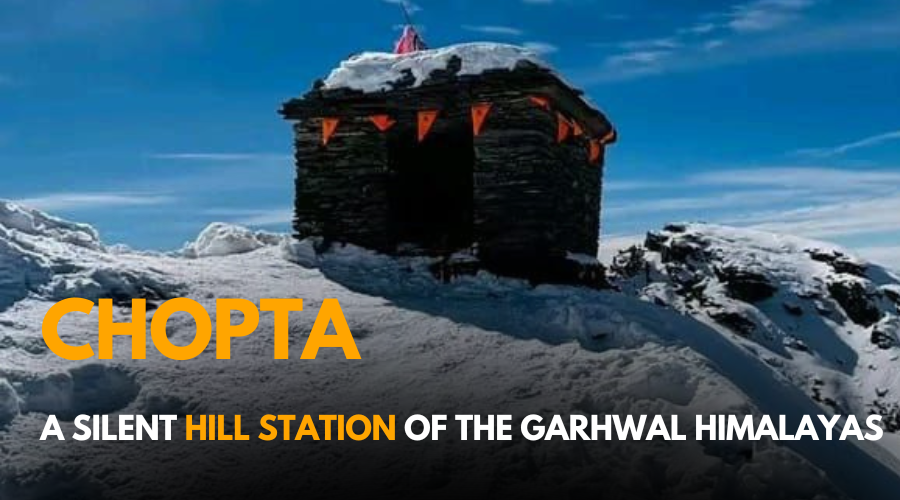
What to Pack – Clothing & Essentials for Chopta Treks
Packing wisely can make or break your trekking experience. Whether you're going on a weekend getaway through a Chopta tour package from Delhi or planning your own route, it's important to be ready for sudden weather changes, cool mountain air, and changing terrain. The Tungnath Chandrashila trek from Delhi is moderately easy, but staying warm, dry, and light on your feet makes all the difference.
If you're booking one of the many available Chopta tour packages, basic arrangements like stay and meals may be covered—but packing your own essentials is still key.
Clothing Essentials
-
Thermal inners (top & bottom) – a must for morning and night warmth
-
2–3 full-sleeve dry-fit T-shirts – for layering and breathability
-
Fleece or wool jacket – mid-layer insulation
-
Windproof down jacket – especially needed in winter months
-
Waterproof trekking pants – avoid jeans; carry one spare pair
-
Woollen gloves & cap – especially if going anytime from October to March
-
Comfortable trekking shoes – with good grip and ankle support
-
Woollen socks + extra cotton socks – moisture control and warmth
-
Rain poncho or jacket – essential during pre-monsoon or post-monsoon treks
Gear & Personal Items
-
Day backpack (20–30 L) – for carrying essentials during trek
-
Torch or headlamp – especially useful if trekking for sunrise at Chandrashila
-
Reusable water bottle/thermos – stay hydrated
-
Power bank – electricity may not be reliable in remote guesthouses
-
Sunscreen & lip balm – UV rays are strong even in cold weather
-
Personal medications & basic first aid – include pain relief spray, band-aids, ORS, etc.
-
Toilet paper, hand sanitizer, face wipes – limited facilities on the trail
Bonus Tips for Chopta Trekkers
-
Weather shifts quickly in Chopta; always carry an extra layer.
-
If you're doing the Tungnath Chandrashila trek from Delhi, start packing 2–3 days in advance to avoid last-minute rush.
-
Most Chopta tour packages won’t include personal gear—check with your provider to confirm what's provided.
Smart packing ensures you stay focused on the beauty of the trail—not the discomfort. Whether it’s your first trek or your fifth, be ready, stay light, and keep it simple.
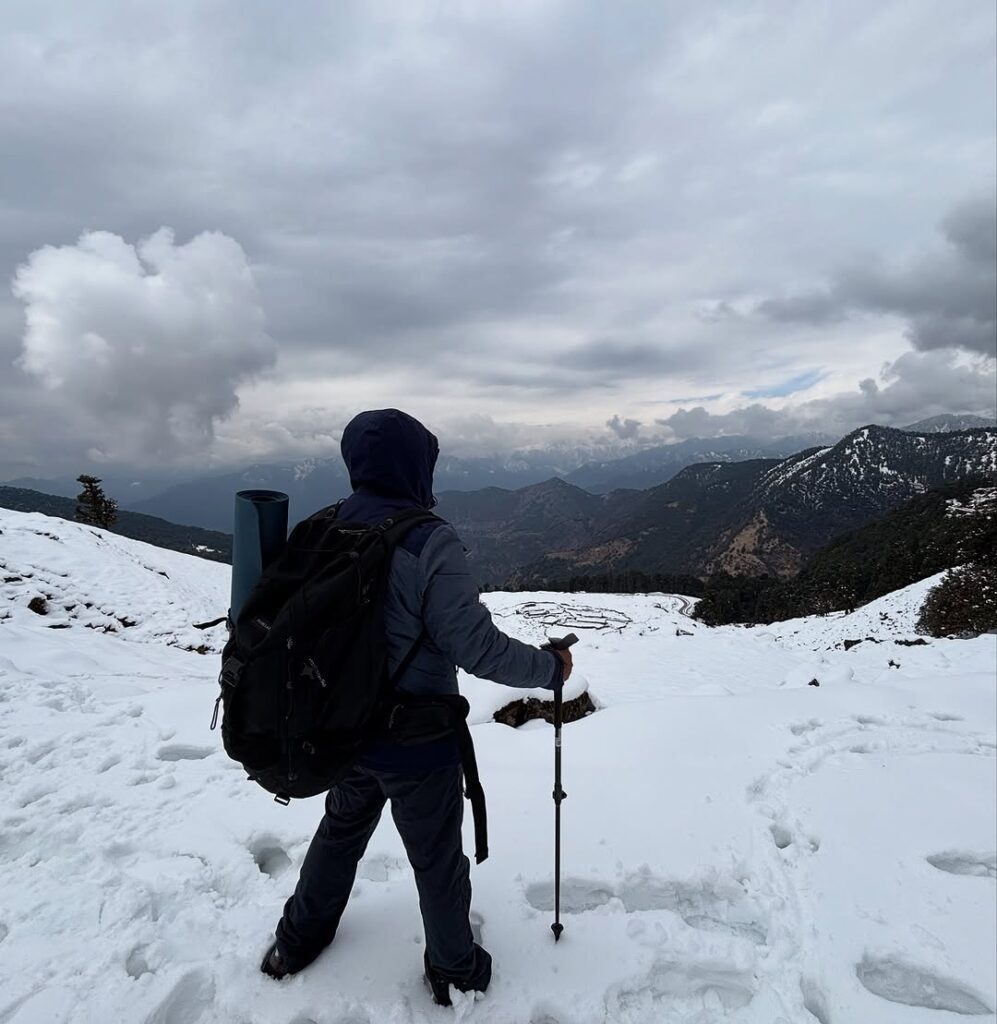
Stay Options on the Trail – Camps & Guesthouses in Chopta
Finding the right place to stay can elevate your Chopta Tungnath trek experience from basic to memorable. While Chopta is a remote mountain village, it offers a decent mix of camps, homestays, and guesthouses for all kinds of travelers—from solo trekkers and couples to families on a weekend adventure.
If you're opting for a Chopta Tungnath trek as part of a package or planning it on your own, having a warm, clean, and well-located place to rest after the trek makes all the difference. The charm of staying in Chopta lies in its simplicity—no big hotels or resorts, just cozy places with views of the snow-capped Himalayas, local food, and pure mountain air.
Popular Stay Options in Chopta
-
Tented Camps:
Great for those looking for an outdoor vibe. Tents come with beds, blankets, and attached or shared bathrooms depending on the package. Bonfires and simple meals are usually included. -
Eco-Lodges & Homestays:
Run by locals, these are clean, comfortable, and provide home-cooked food. They’re ideal for a peaceful stay after a long trek. -
Guesthouses & Budget Hotels:
Simple rooms with basic facilities like hot water, electricity (if weather permits), and a private washroom. Ideal for families or small groups.
What to Expect from Accommodation in Chopta:
-
No luxury, but high on warmth – The focus is on mountain views and cozy vibes, not modern interiors.
-
Basic but hearty food – Most places serve dal, rice, sabzi, and roti, perfect after a trek.
-
Early sunset, early rest – Electricity might be limited, and nights get cold even in summer.
-
Limited internet – This is your chance to disconnect and breathe.
For those booking a Chopta Tungnath trek with stay included, most Chopta tour packages offer accommodation in camps or guesthouses as part of the deal. Make sure to confirm what's included—some provide heaters or extra blankets at an additional cost.
Choosing the right place to stay helps you rest, recover, and truly enjoy the next day’s sunrise at Chandrashila or the peace of Tungnath.
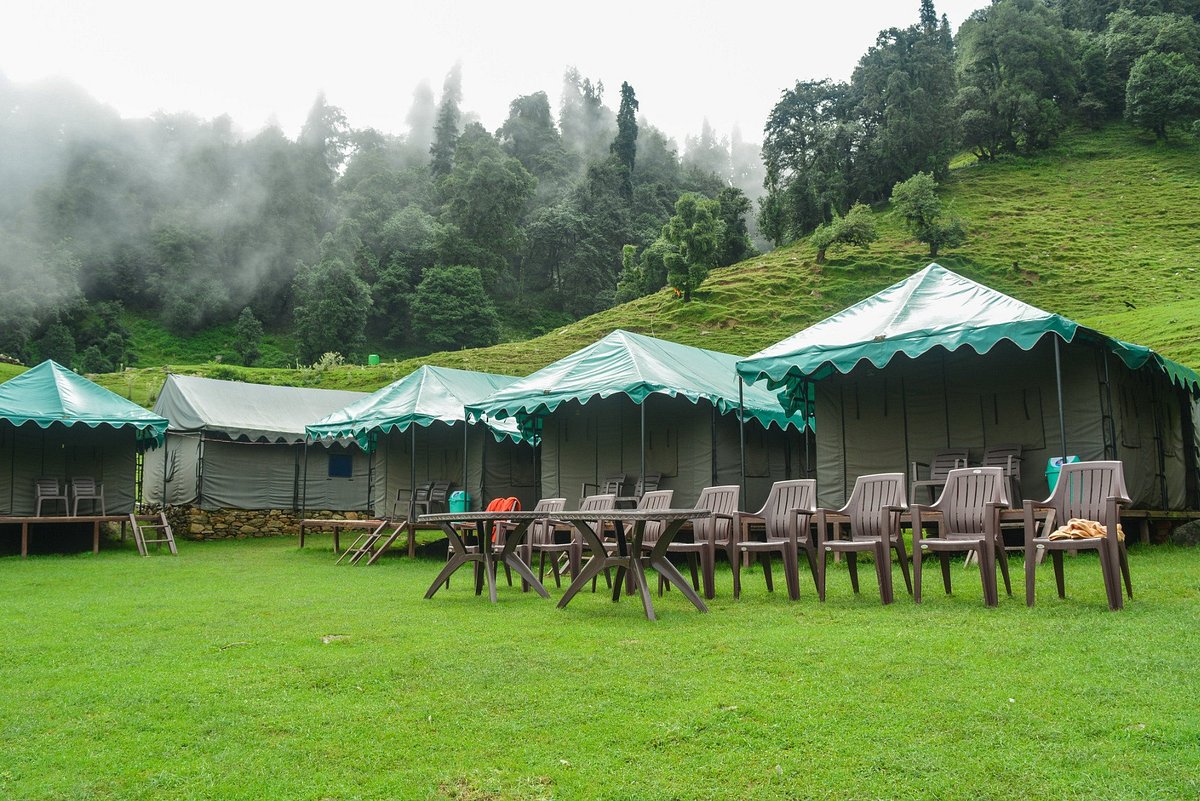
Photography Spots – Capturing Chopta’s Best Views
If you’re heading to Chopta with a camera or just love sharing your travels on Instagram, you’re in for a visual treat. The Chopta Tungnath trek and Chandrashila summit offer some of the most picture-perfect frames in the Garhwal Himalayas. From rolling meadows and snow-covered trails to temple silhouettes at sunrise, every step along the trail gives you something worth capturing.
Whether you're carrying a DSLR or just your phone, the natural lighting, untouched landscapes, and dramatic mountain backdrops make Chopta a dream destination for photographers.
Top Photography Spots on the Chopta Tungnath & Chandrashila Trek:
-
Chopta Meadows (starting point):
Gentle slopes with forested edges and distant mountain views—ideal for wide-angle shots at golden hour. -
Trail to Tungnath Temple:
Stone-paved paths lined with rhododendrons and pines, perfect for moody forest captures or trail shots. -
Tungnath Temple:
Frame the ancient Shiva temple against snow or clouds for an incredible contrast of spirituality and nature. -
Ascent to Chandrashila:
This section gives you vast, open Himalayan views—perfect for silhouette shots, portraits, or dramatic sky compositions. -
Chandrashila Summit at Sunrise:
Easily the highlight of the Chandrashila trek. As the sun rises, peaks like Nanda Devi, Trishul, Kedarnath, and Chaukhamba glow golden. It’s a once-in-a-lifetime frame. -
En route Forest Trails:
Early morning mist, dense trees, and natural light streaming through the canopy offer magical photo opportunities.
Tips for Better Trek Photography:
-
Carry extra batteries and memory cards—cold temperatures drain power fast.
-
Use a polarizing filter for mountain skylines.
-
Start the trek early for soft morning light and fewer crowds.
-
Capture movement—trekkers on the trail, wind through trees, prayer flags fluttering.
-
Respect the landscape—avoid flying drones near the temple or disturbing the peace.
Whether you're a professional or a casual traveler, the Chopta Tungnath trek and Chandrashila summit trek provide unmatched beauty through every lens. And if you're taking the Chopta tour package from Delhi, don’t forget to keep your camera handy from the drive itself—the views start long before the trek does.
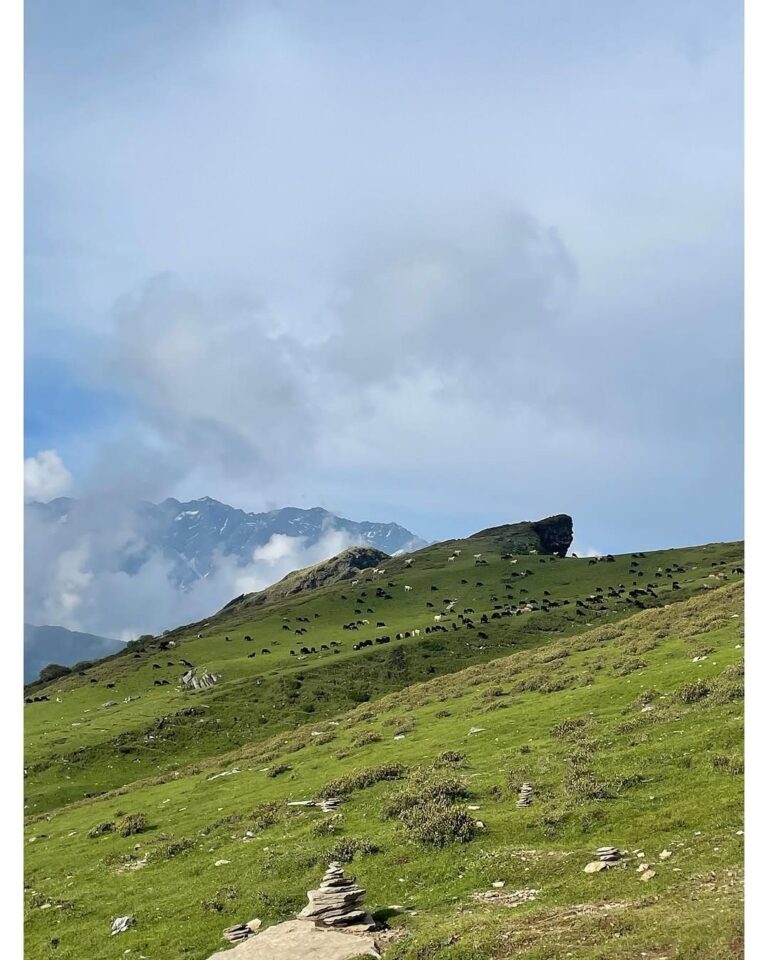
Book a Guided Chopta Tungnath Trek – Packages & Group Options
If you're dreaming of mountain trails, peaceful meadows, and sunrise views without the stress of planning everything on your own, then a guided Chopta Tungnath trek is the way to go. These treks are perfect for first-timers, weekend travelers, and nature lovers who want a complete experience without worrying about logistics.
From transport to stay and expert trail guidance, choosing a Chopta tour package lets you focus on what really matters—being in the moment and enjoying the Himalayas.
Whether you're traveling solo, with friends, or as a couple, there are several Chopta Tungnath trek package options that suit every budget and preference.
Group Options You Can Choose:
-
Fixed Group Departures:
Best for solo travelers and small groups looking to meet like-minded people. These run on set dates and are cost-effective. -
Private Group Tours:
Perfect for families, corporate teams, or college groups. You get flexibility with dates, routes, and pace. -
Couple or Duo Treks:
Prefer a peaceful escape? Opt for a more private and personalized experience with fewer people and more comfort.
Why Go for a Guided Trek?
Planning a Chopta Tungnath trek from Delhi sounds simple—but unexpected weather, route confusion, or limited stay options can quickly get tricky. A guided trek ensures you're never alone on the trail, helps you stick to your schedule, and gives you insights only a local guide can offer.
For travelers coming from Delhi-NCR or nearby cities, booking a Chopta tour package from Delhi makes the trip smooth from start to finish. It saves time, avoids last-minute hassles, and lets you enjoy one of Uttarakhand’s most beautiful trails with complete peace of mind.
Looking for group deals or customized trips? Now’s the time to lock your dates and start the journey.
For Bookings & Queries:
Call/WhatsApp: +91-9990055699
Visit: www.tourmyholiday.com
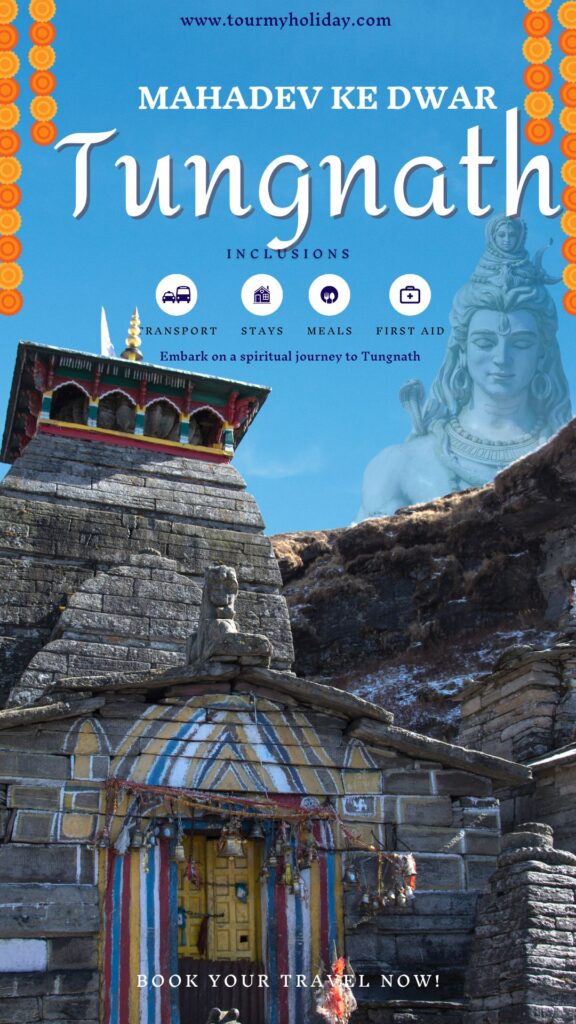
Frequently Asked Questions About Chopta
1. What is included in a typical Chopta tour package?
Most Chopta tour packages include transportation, accommodation, meals, guided treks to Tungnath Temple and Chandrashila, and basic camping gear if required.
2. How difficult is the Chopta Tungnath trek?
It’s a moderate trek suitable for beginners with basic fitness. The trail is well-marked and scenic.
3. What is the best time to visit Chopta and Tungnath?
March to June and September to November are ideal. Snow lovers prefer December to February.
4. Is the Chandrashila trek suitable for beginners?
Yes, the Chopta Chandrashila trek is beginner-friendly and often chosen by first-time trekkers and families.
5. How long is the Chopta Tungnath trek?
The trek from Chopta to Tungnath is around 3.5 km one way, and an additional 1.5 km to Chandrashila summit.
6. What’s the altitude of Tungnath and Chandrashila?
Tungnath Temple sits at 3,680 meters, while Chandrashila summit is at 4,000 meters above sea level.
7. Are there Chopta tour packages from Delhi or Haridwar?
Yes, you can book a Chopta tour package from Delhi, Haridwar, Rishikesh, and Dehradun with flexible pricing options.
8. What is the average Chopta tour package price?
The price typically ranges from ₹5,500 to ₹9,000 per person, depending on the duration, group size, and inclusions.
9. Is Tungnath temple open throughout the year?
No, Tungnath Temple remains open from April/May to October/November and closes during winter due to heavy snowfall.
10. What kind of wildlife can I see in Chopta?
Chopta is rich in biodiversity—expect to see monals, musk deer, langurs, and a variety of Himalayan birds and flora.
.jpg)

.jpg)
